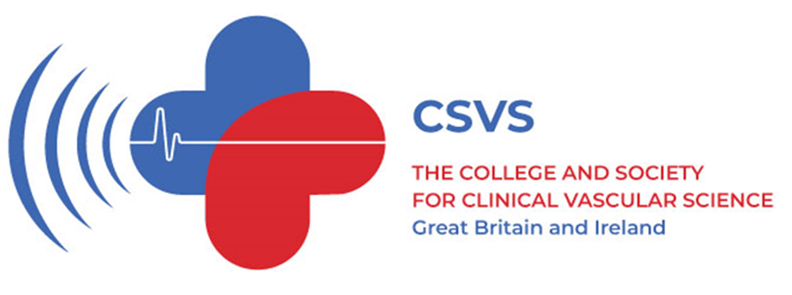CASE REPORT
Traumatic superficial temporal artery pseudoaneurysm managed with ultrasound-guided compression
Condell L, Fahey B, Hurley H
Abstract
Superficial temporal artery aneurysms are rare, accounting for approximately 1% of all arterial aneurysms, with 95% of these being pseudoaneurysms. They are most commonly caused by trauma to the temporal region. Although ultrasound-guided compression has been described as a management technique, it has been believed to be ineffective. This report describes the case of an 81-year-old female on anticoagulation who presented with a pulsatile mass over her left temporal region 4 weeks after a fall. Arterial ultrasound confirmed the presence of a pseudoaneurysm of the frontal branch of the superficial temporal artery, which was successfully treated with ultrasound-guided compression. This case therefore highlights that ultrasound-guided compression can serve as an effective non-surgical treatment option for pseudoaneurysms of the superficial temporal artery.
Introduction
Superficial temporal artery aneurysms are a rare but potentially serious vascular injury that most commonly result from blunt trauma to the temporal region.1,2 They account for approximately 1% of all arterial aneurysms, with around 95% classified as pseudoaneurysms.3 Clinically, they present as a pulsatile subcutaneous mass over the temporal region and can lead to complications such as rupture, haematoma formation or compression of adjacent structures.4 Diagnosis typically involves the imaging modalities ultrasound, computed tomography angiography (CTA) and magnetic resonance angiography (MRA). Given the potential for serious complications, urgent diagnosis and appropriate management are critical, with treatment options including surgical ligation, conservative approaches such as ultrasound-guided compression, and interventional radiology techniques such as coil embolisation and direct thrombin injection.1,3
Case report
An 81-year-old female with a history of atrial fibrillation managed with apixaban initially presented to the Emergency Department (ED) following a fall during which she sustained a head injury. A computed tomography (CT) scan revealed no intracranial pathology and she was subsequently discharged the same day.
Four weeks later she re-presented to the ED with a tender pulsatile mass over her left temporal region, corresponding to the site of her initial head injury. Clinical examination revealed a well-defined, circular, pulsatile swelling measuring approximately 2×2 cm, associated with surrounding erythema and an adjacent superficial healing laceration (Figure 1). Arterial ultrasound demonstrated a 1×0.8×0.5 cm pseudoaneurysm arising from the frontal branch of the left superficial temporal artery, with characteristic ‘yin-yang’ flow on colour doppler imaging (Figure 2).
Following consultation with the Interventional Radiology department, a decision was made to attempt non-surgical management using ultrasound-guided compression. The primary pseudoaneurysm was compressed under ultrasound guidance in two 30-minute sessions, resulting in cessation of blood flow within the pseudoaneurysm sac. During the procedure, a smaller secondary pseudoaneurysm was identified superior to the primary lesion. It was similarly treated with two 15-minute sessions of ultrasound-guided compression, with post-procedural imaging confirming the absence of blood flow within the sac.
Follow-up ultrasound performed the following day confirmed the resolution of both pseudoaneurysms and the patient was successfully discharged. Upon review in the outpatient department 4 weeks later, no residual or recurrent lesions were observed.
Discussion
Traumatic temporal artery aneurysms are rare yet potentially serious vascular injuries that can result from penetrating or blunt trauma to the superficial temporal artery or its branches. The superficial temporal artery branches from the external carotid artery at the base of the parotid gland. As it follows a tortuous course over the temporal bone, it is relatively unprotected and is therefore particularly susceptible to injury.5,6 Pseudoaneurysms of the superficial temporal artery, as in our patient, have most commonly been reported due to blunt head trauma; however, cases secondary to penetrating trauma, injections and surgical interventions have also been described in the literature.3
Superficial temporal artery aneurysms occur as a result of traumatic disruption to the vessel wall. This is thought to occur due to one of two mechanisms: partial transection of the artery or severe contusion and subsequent necrosis of a section of the arterial wall. Subsequent haemorrhage is confined by the overlying skin, leading to the formation of a haematoma. Over time, this haematoma becomes organised and forms a fibrous pseudocapsule. Continuous lysis and resorption of the luminal thrombus may allow arterial recanalisation, permitting ongoing blood flow into the pseudoaneurysm sac, causing progressive dilation of the weak haematoma capsule.3,6
The diagnosis of superficial temporal artery aneurysms requires a multifaceted approach involving medical history, physical examination and imaging studies. Imaging modalities typically include ultrasound, CTA and MRA.2
Surgical management of superficial temporal artery aneurysms is frequently reported in the literature and typically involves ligation of the proximal and distal vessel segments with excision of the pseudoaneurysm.5,6 More minimally invasive approaches include coil embolisation and image-guided thrombin injection.1,3,5 Ultrasound-guided compression has been described in the literature as a management technique for these aneurysms, but it has often been considered ineffective.3 However, our case demonstrates that ultrasound-guided compression can be a viable non-surgical treatment option in selected patients. Given the low recurrence rate reported in the literature, routine long-term follow-up is generally not required.5
Conclusion
Traumatic superficial temporal artery aneurysms are a rare but serious consequence of head trauma, with the potential to cause significant complications if not promptly managed. The risk of rupture and associated cerebral complications underscores the critical importance of early and accurate diagnosis. Advances in medical imaging and interventional techniques have significantly improved the ability to diagnose and manage these aneurysms, thereby reducing associated risks and enhancing patient outcomes. In this case, ultrasound-guided compression was an effective minimally invasive treatment option and perhaps should be considered a first-line alternative to surgical intervention in selected patients.
Article DOI:
Journal Reference:
J.Vasc.Soc.G.B.Irel. 2025;4(3):156-158
Publication date:
May 27, 2025
Author Affiliations:
Department of Vascular Surgery, St Vincent’s University Hospital, Elm Park, Dublin, Ireland
Corresponding author:
Lynda Condell
Vascular Surgery Specialist Registrar, Department of Vascular Surgery, St Vincent’s University Hospital, Elm Park, Dublin 4, D04 T6F4, Ireland
Email: [email protected]











